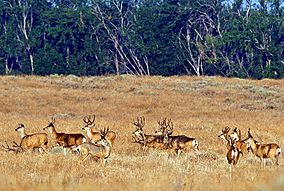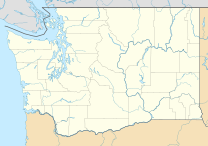Umatilla National Wildlife Refuge facts for kids
Quick facts for kids Umatilla National Wildlife Refuge |
|
|---|---|
|
IUCN Category IV (Habitat/Species Management Area)
|
|

|
|
| Location | Morrow County, Oregon Benton County, Washington |
| Nearest city | Hermiston, Oregon |
| Area | 23,783 acres (9,625 ha) |
| Established | 1969 |
| Governing body | U.S. Fish and Wildlife Service |
| Website | Umatilla NWR |
The Umatilla National Wildlife Refuge is a special place for animals and nature. It is located along the Columbia River in both Oregon and Washington. This refuge was created in 1969. Its main job is to help make up for the natural homes that animals lost. This happened when the John Day Dam was built and caused flooding.
The refuge is a popular spot for people who love to watch birds and other wildlife. It is a very important area for many different creatures.
What Makes Umatilla Special
The Umatilla National Wildlife Refuge has many different types of natural areas. These include:
- Open water
- Sloughs (slow-moving channels of water)
- Shallow marshes
- Seasonal wetlands (areas that are wet only at certain times)
- Cropland
- Islands
- Shrub-steppe uplands (dry areas with shrubs and grasses)
How the Refuge is Organized
The refuge is divided into six main parts, called units. Two of these units are in Oregon, and three are in Washington. One unit is right in the middle of the Columbia River! This setup helps protect different types of habitats.
Why This Place is Important for Wildlife
Natural wetlands and other wild areas are rare in this part of the country. This makes the Umatilla National Wildlife Refuge extremely important. It is a vital stop for many animals, especially birds.
It helps:
- Waterfowl (like geese and ducks) that are migrating
- Bald eagles
- Birds that nest in groups (colonial nesting birds)
- Other birds and animals that live there all the time
The refuge is perfectly located along the Pacific Flyway. This "flyway" is like a major highway in the sky for birds. It helps birds traveling long distances. It gives geese and ducks that nest in the Arctic a warm place to spend the winter. It also offers a safe spot for them to rest during their long journeys.
![]() This article incorporates public domain material from websites or documents of the United States Fish and Wildlife Service.
This article incorporates public domain material from websites or documents of the United States Fish and Wildlife Service.


